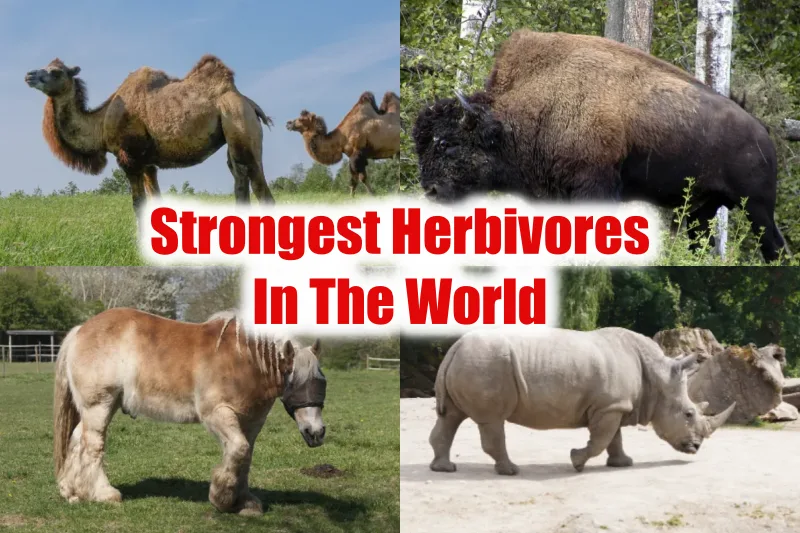Most of the largest land animals in the world belong to herbivores. Humans have harvested their strength since time immemorial to accomplish several tasks. However, anthropogenic activities have driven many animals to the brink of extinction.
Amidst the wide spectrum of species, a common question arises, Which is the strongest of them all? So, to answer this question, we bring to you this article, “Top 10 Strongest Herbivores in the world.“
Top 10 Strongest Herbivores In The World
10) Musk Ox
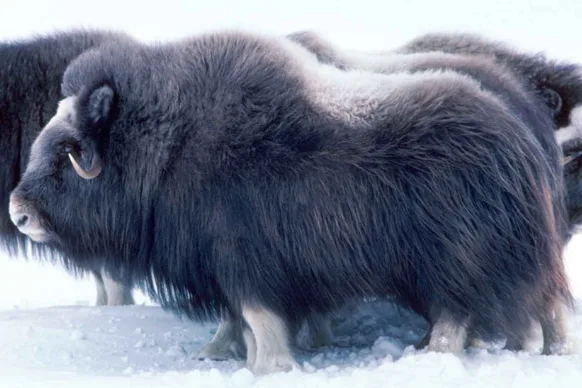
Location- Arctic Regions of northern Canada, Alaska, and Greenland
In the last position on our list of Strongest Herbivores in the world, we have the Musk ox. They are quite a large breed of cattle, with females measuring around 135-200 cm (4.4-6.6 ft) in length, while males are larger, around 200-250 cm.
Musk oxen have an average height of 1.1-1.5 m (4- 5 ft) at the shoulder and 6.6- 8.2 ft for males. Adults, on average, weigh 285 kg (630 lb) and range from 180- 410 kg (400- 900 lb). It is an Arctic native, known for both its thick coat and the potent scent that males release during the annual rut.
9) Belgian Heavy Draft Horse

Location- Worldwide (Origin- Belgium)
The Belgian Draft Horse is one of the strongest breeds of horses to exist. Belgian draught horses are gentle and tolerant and have a large physique, thick muscles, and short legs. They are typically between 1,800 -2,200 lb (820 to 1,000 kg) in weight and 5.5 – 6 ft in height.
The physique is small, with a narrow, short back and strong loins. They are highly muscular beings. The Belgian Horse is renowned for its gentle demeanor and manageability. They are still employed for a variety of draught tasks, including plowing, logging, and pulling carriages.
8) Moose
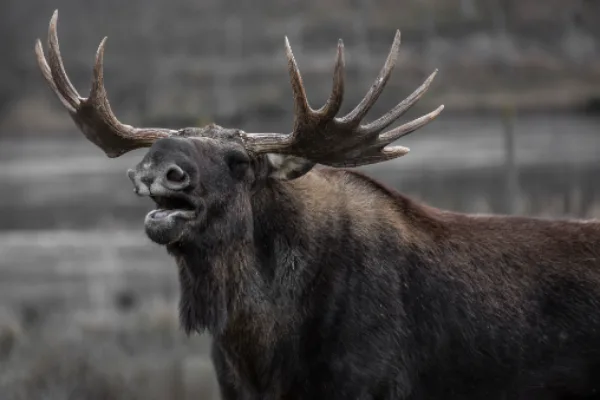
Location- Canada, Alaska, and Northern Alaska
Moose is the largest extant species of the deer family. An adult moose’s height at the shoulder ranges from 1.4 to 2.1 m (4 .7- 6.11 in). The largest moose specimens can be found in eastern Siberia and Alaska, where bulls can reach shoulder heights of 2 m (7 ft) and weights of 600 kg (1,300 lb).
Males are easily identified by their enormous antlers, which can measure 6 feet in length. Its sheer size and height make it one of the strongest herbivores in the world to exist.
7) Bactrian Camels
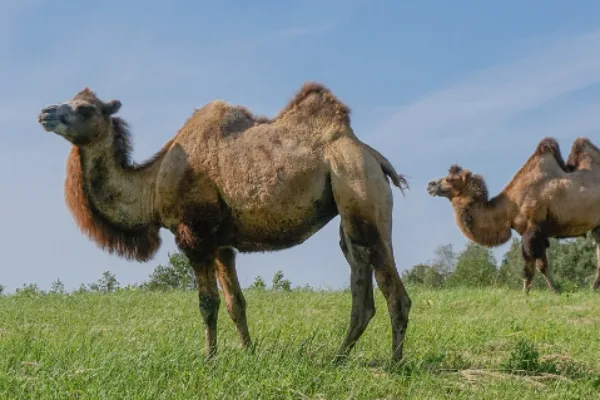
Location- Bactrian Camel (Central Asia)
Dromedary Camel (Middle East, Sahara Desert, and South Asia)
The Camel is one of the strongest herbivores and is a common draught animal. They can carry almost 500 kg of weight for around 30 km and are a vital means of transportation, especially in the deserts. A mature adult dromedary camel measures 2.15 m (7.1 ft) at the hump and 1.85 m (6.1 ft) at the shoulder.
Bactrian camels are generally a foot taller. Camels can run at speeds of 45 km/h (40 mph). Dromedary camels generally weigh anywhere between 400-600 kg, while Bactrian Camels weigh 600-1000 kg.
6) Masai Giraffe
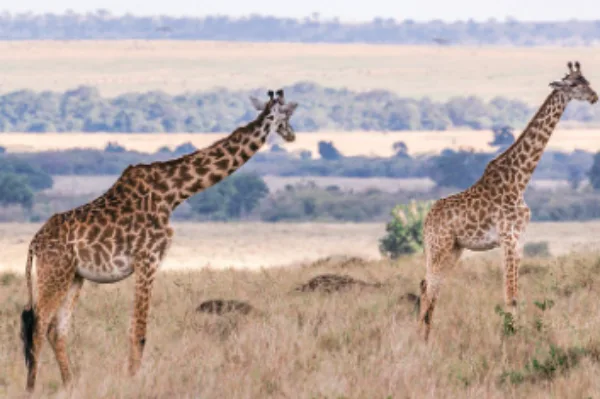
Location- Savannahs and Woodlands
The Giraffe is the tallest terrestrial land animal. Adult males stand at 5-5.9 m tall, while females are nearly 4.3-5.2 m tall. Males may weigh approximately 4,200 pounds (1,900 kg), while females are nearly 1,200 kg.
Giraffes hold the crown for the strongest kicks of any animal in the world, about 2000 psi, which can not only kill an adult male lion but can also behead it.
5) Cape Buffalo

Location- Southern and East Africa
Next up on the list of the Largest herbivore in the world we have the largest bovine in Africa, the Cape Buffalo. This variety of African buffalo is particularly hardy. Its head-and-body length can vary from 1.7 to 3.4 m, and its shoulder height can range from 1-1.7 m (3.3 to 5.6 feet).
Male cape buffaloes typically weigh more than females and range in weight from 425 to 870 kg (937 to 1,918 lb). They are highly social animals and do not think twice about picking up a fight with the lions to defend the herd.
4) American Wood Bison
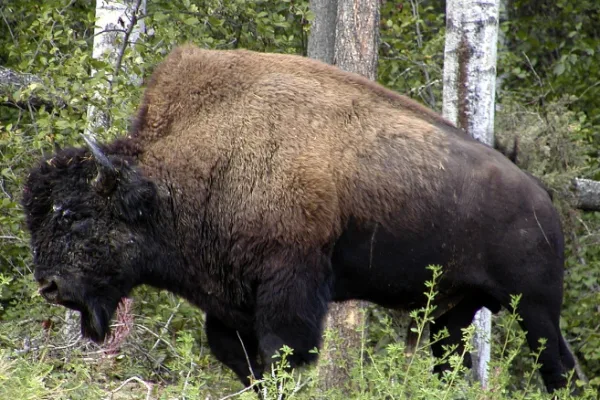
Location- Alaska and Boreal forests of Northern America
The American Wood Bison is the second tallest herbivore in North America, with a body length of 3.3 m and 6 ft in height. They weigh around 1,200 kg (2,650 lb), which makes them the heaviest land animal in America. They have less foreleg hair and woollier coat. American Wood Bisons primarily feed on grasses, forbs, and sedges.
3) Indian Gaur
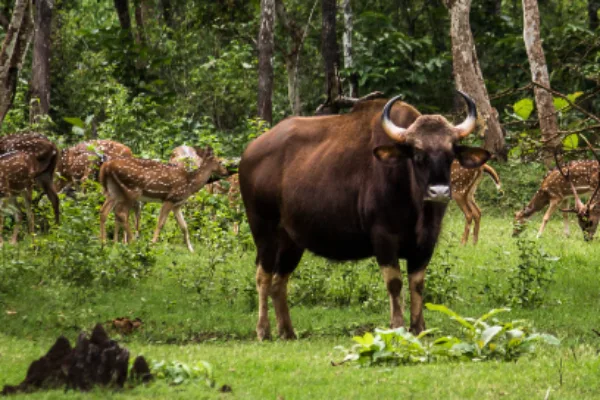
Location- India, Thailand, Malaysia, Nepal
The Indian Gaur, or the Indian Bison, is the largest species of wild cattle. It is a huge bovine with a massive muscular build that makes it one of the strongest herbivores. The Gaur has a head-and-body length of 8-10 ft and is 142 to 220 cm (56 to 87 in) high at the shoulder.
Their average height is about 168 cm (5.6 ft) in females and 188 cm (6.2 in) in males, and they weigh around 1 ton.
2) White Rhinoceros

Location- Ol Pejeta Conservancy in Kenya (only 2 females are left)
The White Rhinoceros is the largest extant species among all rhinos. Almost 4 m in length, the White Rhinos weigh approximately 2.5 tons. Their front horns are nearly 24 in long but may reach as long as 59 in.
They have a bite force of around 1000 psi and can hit with a force of 8,300 pounds, which makes them the second strongest herbivore. Currently, they are extinct in the wild, with only two individuals in captivity.
1) African Bush Elephants

Location- Sub-Saharan Africa, including Uganda, Zimbabwe, Kenya
The African Bush Elephant is the largest living terrestrial animal, which also makes it the strongest herbivore in the world. With an average height being 3.2 m and weighing around 6 tons, the African Bush Elephant is also the heaviest land mammal.
They are highly social animals and wander in around 37 African countries. Bush Elephants can lift about 770 pounds with their trunks alone and can carry over 2,100 pounds (1 ton) on their backs.
Conclusion
While herbivores are often associated with grazing and peacefully coexisting with nature, they are by no means defenseless or lacking in strength. From the mighty African elephant to the powerful bison, these creatures prove that strength knows no dietary boundaries.
Understanding and appreciating the impressive strength of these herbivores is crucial to respecting the diverse and awe-inspiring nature of our planet’s wildlife.
FAQs
Q1. Do herbivores have any advantages over carnivores in terms of strength?
Ans. Yes, herbivores have adapted to use their strength for defense and survival, while carnivores primarily rely on strength for hunting and capturing prey.
Q2. How do herbivores protect themselves from predators?
Ans. Herbivores use various methods such as charging, camouflage, forming defensive circles, and relying on their herds’ strength to deter predators.
Q3. Are herbivores less aggressive than carnivores?
Ans. While herbivores are generally less aggressive than carnivores, they can display remarkable aggression when their territory, young, or group members are threatened.
Q4. What is the largest herbivore in the ocean?
Ans. The largest herbivore in the ocean is the manatee, also known as the sea cow.
Q5. Are herbivores important for the ecosystem?
Ans. Yes, herbivores play a vital role in maintaining the balance of ecosystems by controlling plant populations and providing food for carnivores.
Here, we conclude our article on “Top 10 Strongest Herbivores in the world.” Keep a close watch on our website for many more interesting ranked articles.
Also Read:

Meet Abhidept (nickname Monty), the visionary founder of How It See, being an engineering student, he’s fueled by an insatiable curiosity about the world around him. He is captivated by an eclectic correlation between animal groups, science, and nature, and this fascination drives his quest for understanding.
After completing his degree, he’s set on a mission to delve deep into the realm of nature, accumulating knowledge to share with you through his writing. In the meantime, he loves to watch anime and read anime.
